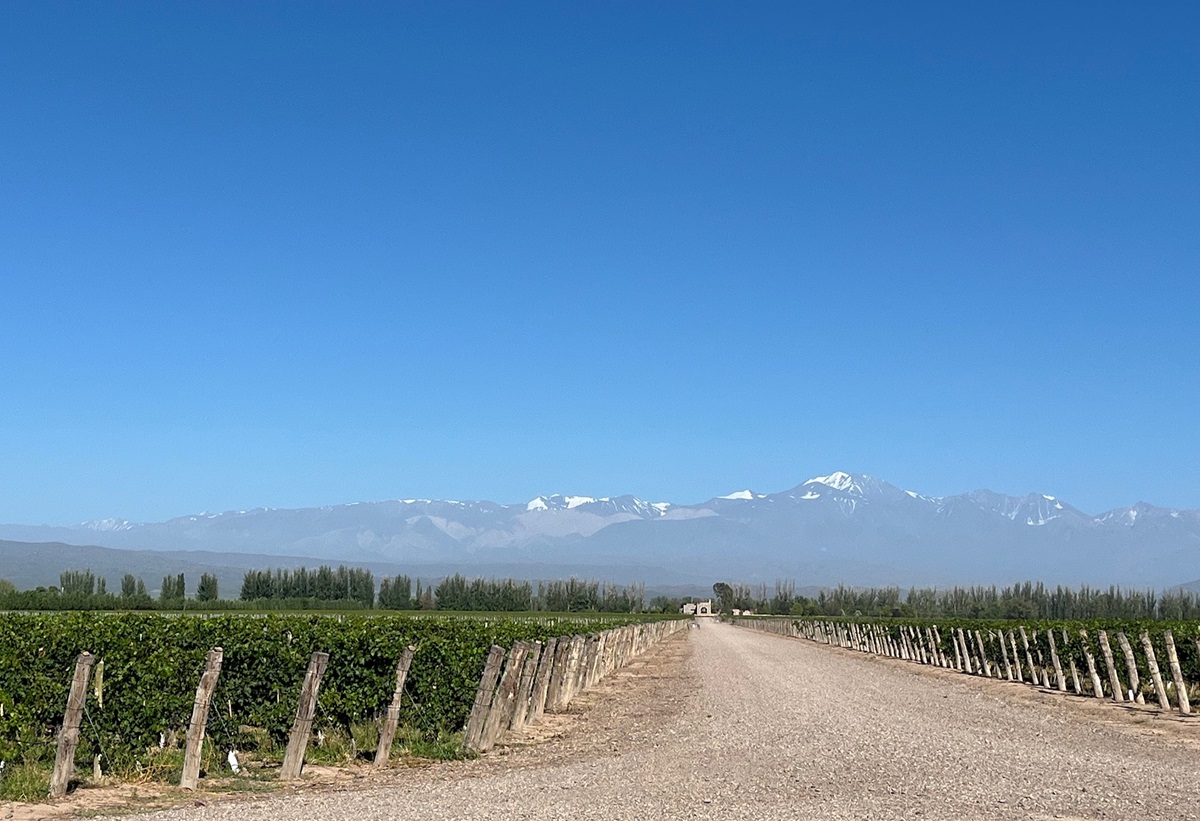VINTAGE ALBARINO
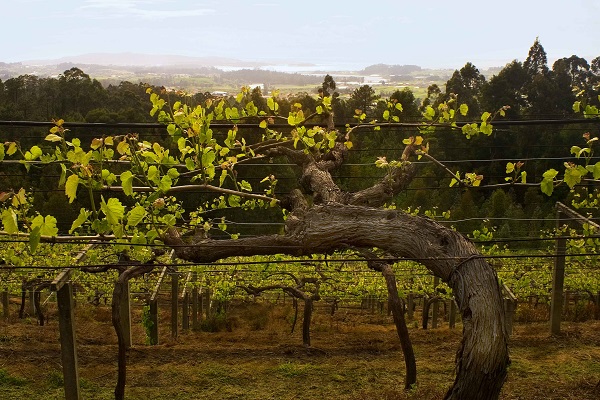
By Rose Murray Brown MW Published in The Scotsman 31 July 2021
Albarino is a much-loved white grape – earning itself the title of ‘Queen of Spanish white wines’ over the last two decades.
Whilst it is now possible to buy Spanish Albarinos in every supermarket and wine shop across the UK – almost every bottle is from the most recent vintage – and we rarely get to buy and taste older vintages.
One winemaker, Paula Fandino (pictured below) of Mar de Frades estate in Rias Baixas, the home of Albarino, believes that the grape can be fascinating as it matures and has set out to prove that it can age well – with mature releases from single vineyard Finca Valinas now on sale.
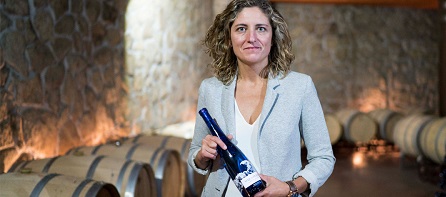
“The majority of Albarinos out there are focused on freshness and youth, but I firmly believe the variety’s natural acidity gives it great ageing potential”, says Fandino.
At a recent online tasting hosted by Fandino I sampled vintages from 2020 back to 2014 from vineyard sites in two Rias Baixas subregions: granite-based Finca Valinas in Val do Salnes near the Atlantic coast (pictured below) and schist-based Finca Monteveiga in more northerly inland Ribera do Ulla.
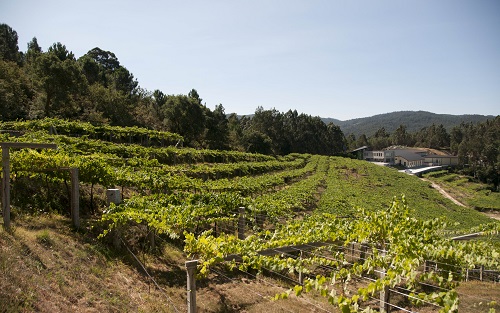
Not only did this demonstrate terroir and vintage variation from warmer 2016 and 2018 to cooler 2017 and 2019, it showed how wonderful Albarino can be with age – the soon-to-be-released Finca Valinas 2016 and more mature 2014 are both impressive.
I was amazed that with age Albarino started to smell and taste like a mature Riesling or dry Semillon with honeyed almost toasty limey notes – with a rich creamy texture and breadth to the palate still with acid present similar to an oaky cool-climate Chardonnay.
Fandino explained that when she makes her wines she focuses her winemaking techniques on whether the wine is to be drunk young or mature.
“Harvesting grapes at the precise moment of maturity is crucial”, says Fandino. “I look for aromatic intensity where the grape provides thiolic aromas of pineapple, apricot, fresh fruit and balsamic notes. Only then can you work on the winemaking to contribute to the wine’s maturity – but to really recognise its potential, you need to wait at least one year after fermentation”.
To make her later release single vineyard Finca Valinas – she macerates the wine for 36-40 hours using the Ganimede fermentation method (a cold maceration process which enhances aromatic white wines by preventing oxidation and the need for sulphites). For the first year after fermentation, Fandino keeps the wine in contact with lees monitoring its evolution
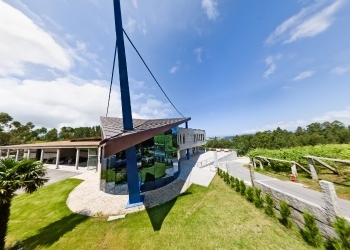 “We need at least a year to see Albarino’s varietal expression – starting to age the wine straight after fermentation would be a mistake”, says Fandino.
“We need at least a year to see Albarino’s varietal expression – starting to age the wine straight after fermentation would be a mistake”, says Fandino.
Once she has noticed floral notes, fennel and white flower aromas, she then proceeds with ageing the wine on its lees in stainless steel with batonnage (regular lees stirring) for nine months on, then three months rest – to enhance its volume and structure. This continues until the fourth all-important year of bottle ageing to allow the wine to develop before release on sale.
Fandino seems relentless in her goal of exploring Rias Baixas’ potential. Not only has she been experimenting with unusual winemaking techniques and maturing wines, she has also produced Albarino sparkling (not my favourite, but interesting to try it) – now she is also scouring Rias Baixas for cooler microclimates as she sees temperatures continuing to rise.
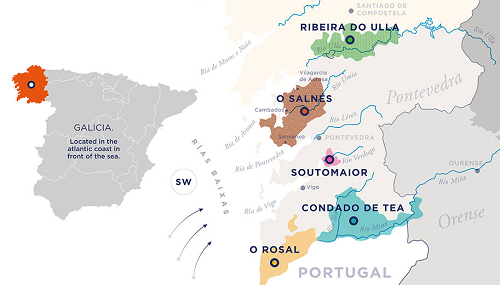
Rias Baixas is a large fragmented region with 4,047 hectares across five subregions. The most prized region is Val do Salnes, so close to the ocean you can feel its taste on the air and the Atlantic climate and granite soil transfers high acid and saline notes to the grape.
“In the last 30 years we have seen at least one degree rise in temperature with more expected, but no change in rainfall”, explained Mar de Frades’ viticulturist Monica Chaves. “As temperatures continue to warm, we need to head north or higher altitude to keep making vibrant whites in future, but it is difficult to find plots above 100m in Rias Baixas”.
For their latest venture they have now headed north in Rias Baixas to explore cooler Ribera do Ulla upland subregion – their Finca Monteveiga vineyard there is always two degrees lower with more continental climate with influence of Ulla river and regular fogs cooling vineyards.
Mar de Frades wines are in eye-catchingly distinctive blue bottles – identifying with the Atlantic influence – popular with younger drinkers, but not with traditionalists. I do like the idea of their thermo-sensitive logo on the label – a little ship appears above the ‘de’ on the label when the wine has been properly chilled.
TASTE TEST:
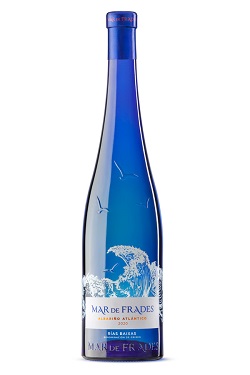 MAR DE FRADES ALBARINO ATLANTICO 2020
MAR DE FRADES ALBARINO ATLANTICO 2020
£16-£22 bt www.exelwines.co.uk www.vinvm.co.uk www.greatwine.co.uk www.nywines.co.uk www.harveynichols.com www.valvonacrolla.co.uk (also available in magnum)
Successful regional blend from 50% Mar de Frades estate grapes, the remainder bought in from growers. Lime and apricot aromas, zippy zesty appley and melon flavours with vibrant acidity, lemon zest hints and distinctive saline notes like a fresh sea breeze across the palate. Serve with sashimi, sushi or Thai crab-cakes.
MAR DE FRADES FINCA VALINAS ALBARINO 2015
£28-£31.50 www.exelwines.co.uk www.greatwine.co.uk
From Mar de Frades’ small 2 hectare single vineyard Finca Valinas: hints of yellow gold, honeysuckle, toast and pineapple aromas, creamy textured palate, slight earthy balsamic notes, fennel herbs with good fruit depth, a backbone of vibrant acid and slightly salty sensation to finish. Serve with marinated fish, bouillabaisse stew or light chicken dish.
Join Rose’s Discover the Wines of Georgia virtual tasting on Friday 3 September www.rosemurraybrown.com
wine tastings
The perfect gift for the wine enthusiast in the family. Rose does In-person tastings too.
cellar advice
Rose does cellar valuations for private clients, valuations for insurers & bespoke portfolio management.
Related stories
March 31, 2024
By Rose Murray Brown MW Published in The Scotsman 30 March 2024 On 2 February 1659, the first wine made from grapes grown in South Africa was crafted by the Governor of the Cape, Jan van Riebeeck. He had planted vines four years earlier in the Company’s Garden near Cape Town from cuttings imported from France. Van Riebeeck’s first
March 24, 2024
By Rose Murray Brown MW Published in The Scotsman 16 March 2024 Heatwaves and bushfires were very much on the agenda when I visited Chile last month as winemakers prepared for their 2024 harvest in blistering heat and drought, with a plume of smoke from the devastating fires lingering over coastal hills. Heat and drought are the greatest challenges
March 23, 2024
By Rose Murray Brown MW Published in The Scotsman 9 March 2024 I have two glasses of Malbec in my hands from the same high-altitude vineyard in Uco valley in Argentina. I am in the Catena Institute of Wine in Mendoza with winemaker Agustin Silva. He has asked me to taste the two wines, both from the 1500m high



